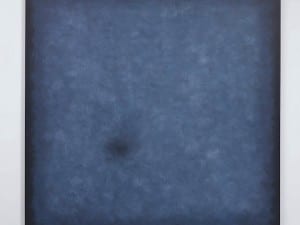Olga Lomaka is an emerging artist who is actively exhibiting worldwide and participating in global art fairs and biennales. In her work she plays with recognisable images and products of consumerism, pooling contrasting beliefs to give a second meaning to hidden symbols through the use of unusual colour palettes.
A: Your newest project, Pink Magic, includes a series of sculptural installations and will be exhibited this year. Could you talk about the concept for the works and where they will be displayed?
OL: Yes, my newest project – that I have been working on for quite some time – is called Pink Magic. The idea originally came from the iconic Pink Panther character, which I am sure that most people know and love very well. To me, this character represents everything pop art is about; I can clearly remember watching it when I was growing up as a child and it always evoked positive feelings. Even today, the icon brings joy and happiness to me. This series is about communicating that sense of happiness.
The compositions use the iconography of the panther in a variety of positions and poses, all based around an almond-shaped hole that, on first glance, appears to be three-dimensional, but in reality, it is a two-dimensional work. By creating this type of illusion, it looks as though he is trying to escape, but for some magical reason, he cannot. The Pink Panther seems to be powerless and dependent upon the space. It is this mutual relationship – between the Pink Panther and the mysterious hole – that eventually brings us these moments of joy and intrigue.
The works will be displayed at Art Basel Miami in December, as well as in various exhibitions around London, Moscow and Kiev, appealing to international audiences. Since I love pushing boundaries and exposing my art to new cultures and regions of the globe, I am planning to follow up with a number of further exhibits in Paris, Hong Kong, Tokyo, and of course, New York – the city that never sleeps.
A: Can you explain the connection between “pink magic” and “infinity”?
OL: The Infinity installation is the “grand finale” to the Pink Magic series. It is a 3.5-metre display that synthesises the essence of the Pink Magic series into a cohesive statement about pop culture, consumerism and the never-ending cycle of human interactions. As the last installment in the 13-part Pink Magic series, Infinity represents the culmination of the human experiences: expectations, struggles, failures and successes. It acts as the perfect climax because it represents the notion that there really are no separate planes; there really is no end, middle or beginning to art, or to life, or to the universe as a whole.
A: Who are your most powerful artistic influences and why?
OL: My artistic influences come from a variety of different places, including my own imagination. However, if I had to choose a handful of artists that have had the most powerful impact on my desire to be an artist, I would have to say Salvador Dali, Rene Magritte, Frida Kahlo, and Luciano Fabro. Each of these artists is special in their own right. However, what draws me to these artists is not how they are perceived by others, but by how they identify art and life as a constant intermingling of emotion and creativity. In addition, I have come to learn that art without emotion is flat and hollow. When an artist is able to harness their pain, joy, anger or wonder into a viewable, thought-provoking piece, magic is created and hopefully this magic can be seen by all viewers.
A: Your work has been called “fiery” and “provocative.” Do you agree with those assessments and can you explain why those words might be used to describe your work?
OL: I do agree with all of those assessments – in fact, I find them to be exceedingly accurate. To me, if a work of art does not inspire emotion and complex thought on some level, then it has not achieved its purpose. Therefore, everything I create is designed to be “fiery” and “provocative” in the sense that I want the viewer to do more than observe my work; I want them to absorb it.
I want them to still be thinking about it – and feeling it – long after the image has left their physical presence. I know that I have fulfilled my destiny as an artist when others become as passionate about my work as I am. This is not to say that I rely on other’s opinions to motivate or inspire me to do better in my future projects.
A: Artists have different motivations: to make a social statement, to move people, to inspire. What would you say is your main motivation behind the art you create?
OL: All three of those motivations are deeply imbedded within me. Without a doubt, I am inspired by the idea of making a social statement in aesthetic form. At the same time, I am motivated to spark unexpected thoughts and feelings in my audiences. However, if I were to narrow it down to my primary motivation, I would have to say it is personal growth. Every time I create a new piece or a new series I learn more about myself, my destiny and the world around me. It is a great feeling to always learn new things regarding your inner-self and your surrounding environment.
I feel so privileged to be able to share my personal journey and life lessons through a medium that thrives on creative expression and limitless imagination. I try to embody this motivation in each of my works, hoping to not only persist in my own expedition of personal growth, but to inspire others to do so as well.
www.olgalomaka.com
www.lomakagallery.com
www.instagram.com/lomakaart
Credits:
1. I Spy with My Little Eye, 2017. Acrylic on canvas, xirallic color, fiberglass. 120 x 190 x 10 cm.





